Exploring the Legacy of Zelda in Gaming History
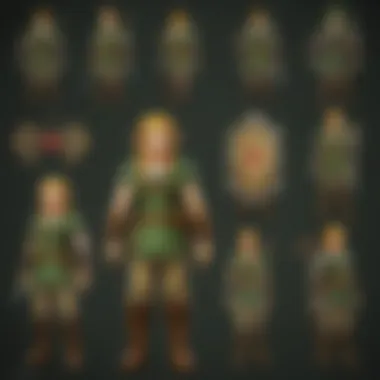
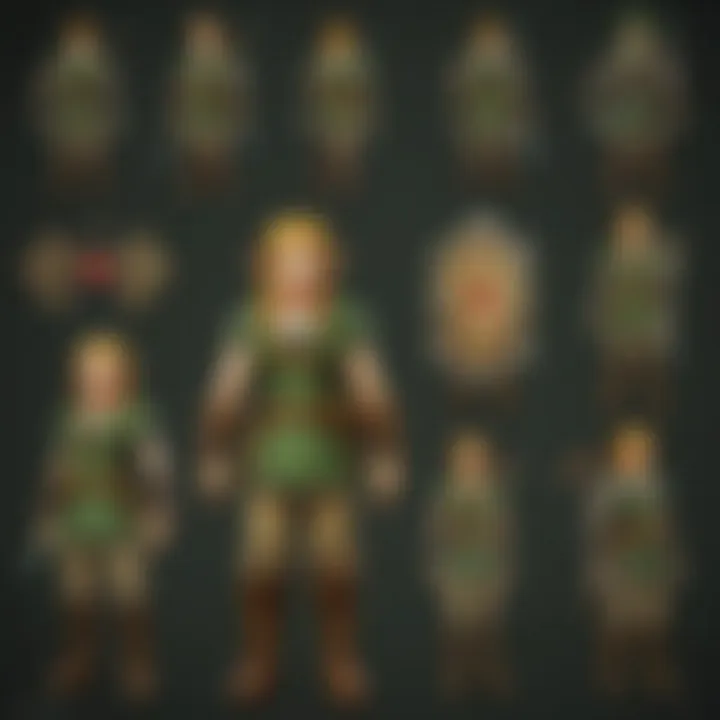
Intro
The Zelda franchise stands tall in the pantheon of video games, weaving a rich tapestry of lore, gameplay innovation, and unforgettable characters. More than just a collection of games, The Legend of Zelda series has profoundly shaped gaming culture itself. From the venture into the vast landscapes of Hyrule to the nuanced stories that unfold in every title, players have been taken on a rollercoaster of emotions and experiences. Fans old and new continue to find something fresh with each release, whether it’s the intricate puzzles or the profound connections to character and story. This article aims to peel back the layers of the Zelda legacy, offering insights into its gameplay, character arcs, and the fascinating lore that underpins its world.
Game Reviews
As we embark on this exploration, it’s essential to dive into the gameplay features and mechanics throughout the franchise. Each game introduced unique elements that not only defined their own experiences but also contributed to the evolution of action-adventure gaming.
Gameplay Features and Mechanics
One of the most significant changes came with Breath of the Wild, where the world was opened up in ways that previous titles could only hint at. Players could climb, cook, and interact with the environment like never before—creating a sense of freedom previously unseen in Zelda games. The introduction of weapon durability, while controversial, pushed players to adapt their strategies continually.
"In The Legend of Zelda: Ocarina of Time, players were limited to a more linear progression, but this newer installment broke that mold, allowing exploration at one's own pace."
Storyline and Quests
The narratives woven into these games are often as engaging as the gameplay itself. The introduction of Zelda: Ocarina of Time ushered in a new era of storytelling within the franchise, portraying a hero's journey that resonated with players. Unlike earlier titles, where the plot was minimal and focused heavily on gameplay, this game introduced memorable characters like Navi and Ganondorf, enriching the quest through emotional stakes and well-defined arcs.
Visuals and Sound Design
Visually, each installment has reflected the era it emerged from. The charming, pixelated graphics of the original game contrasted sharply with the lush, beautiful environments of Breath of the Wild, showcasing a tangible growth in graphical fidelity. Coupled with an inspiring score that underscores the action, these elements create a compelling atmosphere that draws players into the enchanting world.
Comparison with Previous Titles
What follows is a comparison of the innovations and returning themes. While every title enriches its narrative, certain elements remain consistent, allowing seasoned players to feel a comforting familiarity even amidst fresh gameplay advancements. The cyclical nature of Link, Zelda, and Ganondorf’s struggle is a hallmark trope that invites speculation about character arcs and future developments.
These game reviews set the stage for the deeper investigations into character analyses and lore discussions that will follow, enhancing our understanding of not just the games themselves, but their broader cultural impact.
Prologue to the Zelda Franchise
The Zelda franchise has solidified its status as one of the cornerstones of video game culture. This world-renowned series, originating from Nintendo, has captivated audiences since its inception in the late 1980s. The signficance of this franchise isn't merely about the games themselves but encompasses the creative innovations and narrative structures that it pioneers. This section delves into its early beginnings, the cultural footprints it has left, and how both casual players and die-hard fans have formed communities centered around this rich universe.
The Origins of Zelda
The genesis of Zelda can be traced back to 1986. Legendary game creator Shigeru Miyamoto envisioned a world where players could roam freely, exploring vast landscapes filled with treasures and challenges. The concept was revolutionary for its time, featuring an overhead perspective that allowed players to experience actions from a distinct vantage point. Early Zelda games focused heavily on adventure, combining elements of action and puzzle-solving within a unified framework.
Initially inspired by a childhood love of exploring caves and forests, Miyamoto’s vision flourished. The franchise’s first title introduced Link, the brave protagonist, and Princess Zelda, whose enduring story would captivate audiences for decades. The game laid the groundwork for what would evolve into a complex narrative intertwined with various themes like heroism, sacrifice, and the battle between good and evil.
Unique gameplay mechanics and engaging narratives established the series as not just another video game but a cultural phenomenon. Each release peeled back new layers of storytelling and world-building, solidifying The Legend of Zelda as a staple within gaming history. Players around the world embarked on quests through the fantastical land of Hyrule, encountering challenges that tested both their wit and skills.
Cultural Impact of Zelda
The cultural influence of the Zelda franchise extends far beyond the gaming community. Its titles have garnered critical acclaim, serving as a benchmark against which other games are measured. The music, composed largely by Koji Kondo, remains iconic. Tracks like the Overworld Theme have become synonymous with gaming nostalgia for many, transcending the medium itself.
The franchise has sparked enthusiasm in various artistic communities as well. Fan art, cosplay, and even orchestral concerts featuring Zelda music are testament to its reach. It's common to see vibrant Halloween costumes or elaborate fan-made merchandise pop up at conventions, showcasing the creativity it inspires.
But the impact doesn't stop with art and merchandise. The storytelling frameworks used in Zelda's narrative have informed game design across multiple genres. Elements like the nonlinear gameplay and intricate puzzle mechanics have encouraged developers to experiment with open-world designs. The Nintendo brand has thrived on this legacy, continually innovating while paying homage to Zelda's pioneering spirit.
In multi-player forums, fans debate theories about the interconnected timelines and lore of the series, further extending its legacy into the realm of community engagement.
"The Legend of Zelda is not merely a game; it's a portal into an expansive universe where imagination meets adventure."
Through its origins and ongoing cultural impact, the Zelda franchise stands example to the art of video game storytelling and design. As we move deeper into this exploration, we will assess not only how these elements form the core of the series but also how they resonate with countless fans across generations.
Game Development and Innovation
The significance of game development in the context of the Zelda franchise cannot be overstated. From its inception, Zelda has pushed the boundaries of what is possible in video games, making it a cornerstone of Nintendo's innovative spirit. Each entry in the series has introduced not just new gameplay mechanics but also novel ways to tell stories and engage players. These innovations have not only shaped the direction of the franchise itself but have also had a profound impact on the broader gaming industry.
Technological Advancements
When you take a stroll through the Zelda series, you see a whole parade of technological advancements that have transformed the gaming experience. Early titles like "The Legend of Zelda" on the NES showcased a vibrant 2D world, innovative for its time, featuring an open-world design. You could wander Hyrule's fields, poking around every nook and cranny, often discovering surprising secrets. Fast forward a few decades, and you find the expansive 3D environments of "Breath of the Wild" that not only look stunning but also challenge players to interact with the game world in ways that were previously unimaginable.
- Graphics: Zelda has always aimed to leverage the newest graphical capabilities. The transition from pixel graphics to 3D has allowed artists to create more expressive animations and lifelike environments.
- Physics Engines: The introduction of realistic physics in "Breath of the Wild" allowed players to solve puzzles and approach challenges uniquely; for instance, you can use the environment to your advantage with fire, wind, and even water.
- AI Development: Each new title has introduced smarter enemies that react in realistic ways. The sophistication of these AI constructs contributes to a more immersive and challenging experience.
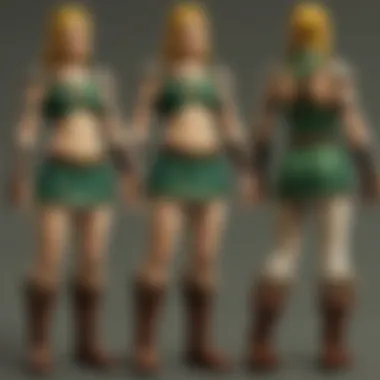
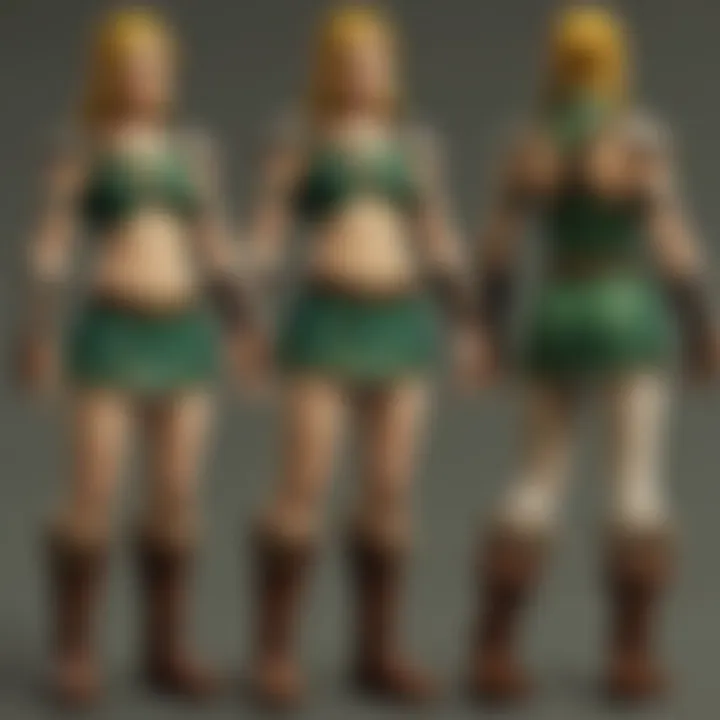
These advancements not only enhanced gameplay but also widened the audience, drawing in newcomers while satisfying long-time fans.
Narrative and Storytelling Techniques
Zelda's storytelling is not your average bedtime story; it brings players into an expansive lore filled with rich characters and intricate plots. The franchise has a knack for weaving complex narratives that unfold across generations, making each title feel like a piece of a larger puzzle.
One of the unique techniques employed in the series is its non-linear storytelling. Unlike many games that stick to a rigid plot line, Zelda often allows players the freedom to explore various paths. This not only provides a sense of agency but also encourages exploration—a central theme of the series.
- Character Depth: Characters like Link, Zelda, and Ganon evolve with each installment. Their development across titles creates a cohesive narrative that fans can follow, making them feel emotionally invested.
- Mythical Elements: The use of mythology adds layers of depth, with recurring themes throughout the series, such as the struggle between good and evil and the concept of destiny. These elements create a timeless quality that resonates with players.
- Environmental Storytelling: The world itself tells a story. From the ruins scattered throughout Hyrule to the ambient soundscapes in each location, players glean insights into the lore without needing heavy exposition.
"Through innovative storytelling and groundbreaking mechanics, the Zelda series has not just told a story but has also built an entire universe where players feel like part of the epic saga."
In summary, the ingenuity in game development and narrative techniques in Zelda has left an imprint not only on Nintendo but on the entire gaming landscape, shaping how games are created, experienced, and appreciated.
Gameplay Mechanics
The gameplay mechanics of Zelda are not just the systems in place for interaction; they are the soul of the franchise. They invite players into the vibrant world of Hyrule, offering diverse experiences with each title. These mechanics engage players on multiple levels, providing intuitive control while enabling a rich tapestry of exploration, combat, and puzzles.
Exploration and World Design
From the first title, The Legend of Zelda, exploration has been at the heart of the series. The vast open worlds encourage players to wander off the beaten path, uncovering hidden treasures and secrets. For example, in Breath of the Wild, the seamless world design allows a level of freedom rarely seen in gaming. Players can climb mountains, glide from high points, or even swim through rivers to discover shrines and resources.
The design philosophy behind Hyrule promotes not only exploration but also curiosity. The compelling visuals—lush forests, sprawling plains, and rugged mountains—are meticulously crafted to draw players in. As they navigate through these environments, exploring various biomes and interacting with NPCs, players become immersed in rich lore and narratives that unfold naturally.
Ultimately, the world design of Zelda blurs the lines between gameplay and story, enhancing the player's experience as they uncover secrets and forge their paths through the land.
Combat Systems
Combat in Zelda games is often adaptive and dynamic. Each installment has brought innovations to how players engage foes, ranging from the sword-swinging mechanics of Link's Awakening to the multi-layered combat strategy seen in Breath of the Wild. This evolution is not just about flashy moves; it’s a deep system where players must study enemy patterns and adopt different approaches.
In many games, the ability to utilize various weapons like bows or bombs adds layers of strategy. For instance, in Ocarina of Time, players learn to target specific enemy parts or exploit environmental aspects. Other titles introduce time-sensitive challenges where quick reflexes are crucial. This intricate approach to combat keeps the mechanics feeling fresh, encouraging players to hone their skills and try different tactics in every encounter.
"The beauty of Zelda's combat systems lies in their simplicity and depth, allowing both newcomers and veterans to find their groove naturally."
Puzzle Elements
Puzzles in Zelda serve as a perfect marriage between exploration and problem-solving. Each game is peppered with challenges that demand critical thinking, often requiring inventive use of acquired items or abilities. Take The Legend of Zelda: The Wind Waker, for instance, where players need to navigate intricate dungeons filled with riddles and environmental puzzles that utilize light manipulation. Each revelation offers a sense of achievement, enhancing the overall engagement with the game.
Moreover, the puzzles are cleverly integrated into the level design. Players can find multiple paths to approach a problem, encouraging creativity. This way, puzzles aren't just obstacles; they enhance the storytelling, as each solved riddle often unveils deeper narratives about characters and the world. In Zelda, every lock has its key, and every key comes with a story waiting to be uncovered.
Iconic Characters
The characters in the Zelda franchise serve as the heartbeat of the series. Their journeys, challenges, and transformations are intricately woven into the fabric of Hyrule, making every title not just a game but a storybook of profound depth. Each character not only propels the narrative forward but also embodies the essential themes of courage, wisdom, and power—the triforce as it were. Analyzing these iconic figures opens a window into the larger lore and the complex relationships that define each installment.
The interactions between characters enhance player immersion, inviting them to invest emotionally in the unfolding drama. Link, Zelda, and Ganon aren’t merely participants; they represent archetypes, showcasing what it means to be heroic, noble, and villainous. By focusing on specific characters, we glean insights that go beyond gameplay mechanics and dive into the very essence of storytelling that the franchise is renowned for.
Link: The Hero of Time
Link, the central protagonist across many Zelda titles, is not just a hero; he's a symbol of perseverance and bravery. His most notable characteristic is his unwavering courage in the face of overwhelming odds. Players often feel they can resonate with Link due to his silent nature, which allows them to project their own thoughts and feelings onto him.
Crafted with a sense of purpose, Link evolves throughout the games, navigating through intricate dungeons and engaging in combat with myriad foes. Each game presents him at different stages of life, from a youthful boy in "The Legend of Zelda: Ocarina of Time" to a battle-hardened warrior in "Breath of the Wild". His iconic green tunic and pointy hat have become emblematic, a visual shorthand for the hero archetype, uniting generations of gamers under a singular banner of adventure.
- Courage: Link represents the essence of facing fears.
- Growth: His journey often reflects a coming-of-age narrative that resonates with players of all ages.
- Legacy: Every triumph inspires hope in Hyrule.
Zelda: The Princess and Her Legacy
Zelda is more than just a damsel in distress; her character transcends the typical archetype often seen in gaming. While she may start as a captive, throughout the series, she reveals her strength, intellect, and ability to influence events even from the shadows. In many titles, she is a wise leader and a guiding force for Link.
Zelda's duality��—being both the princess and a warrior capable of taking action in her own right—allows her character to embody wisdom and courage simultaneously. In "The Legend of Zelda: Spirit Tracks", for instance, she plays a pivotal role in manifesting her spirit to aid Link, thereby reinforcing the idea that her legacy is not just about lineage but also about agency and influence.
- Intelligence: Zelda often employs her wisdom to navigate the complexities of power.
- Sacrifice: There are moments where she plays a crucial Part in lifting the burdens of Hyrule.
- Empowerment: Her character progression challenges traditional gender roles in gaming.
Villains: Ganon and Others
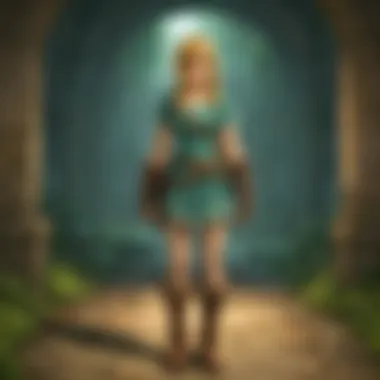
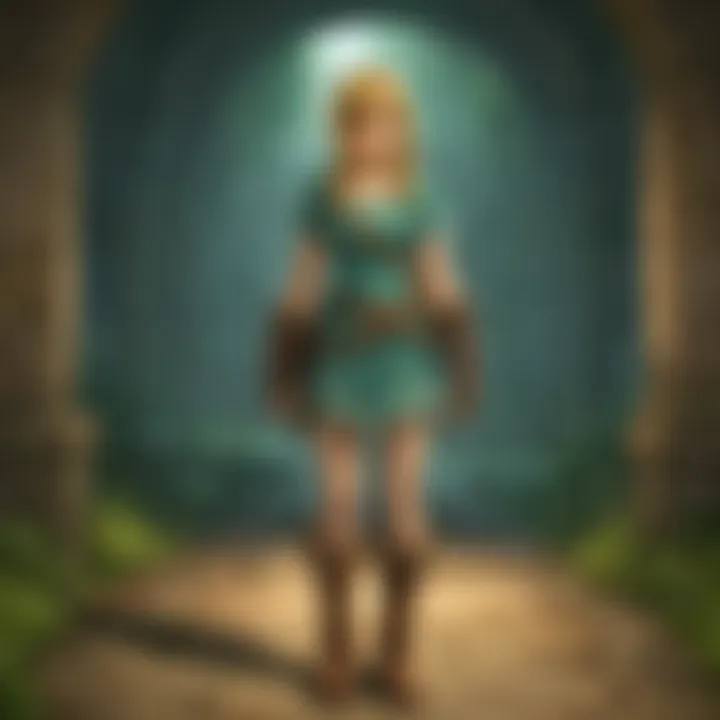
Ganon—the primary antagonist in most of the Zelda games—represents the classic notion of evil. His character is steeped in rich lore, often depicted as a formidable force of darkness and chaos. The struggle against him encapsulates the overarching battle of good vs. evil that runs throughout the series.
Beyond Ganon, the franchise waves in various other villains, each with distinct motivations and backgrounds. Characters such as Vaati and Zant introduce nuanced layers to the world. Not all antagonists are shrouded in darkness; some are complex, even sympathetic, adding depth to the storylines. Evaluating these villains provides insight into what motivates them and the narrative themes they embody.
- Contrasts: Villains like Ganon amplify Link and Zelda’s virtues through opposition.
- Symbolism: Each villain often symbolizes broader societal issues or personal struggles.
- Narrative Devices: Antagonists push the heroes to evolve, facing deeper personal and external challenges.
"In a world woven with conflict, the characters of Zelda exemplify the eternal clash between light and dark, teaching us valuable lessons along the way."
Overall, the characters in the Zelda franchise are not mere avatars; they are integral to the series’ powerful storytelling. Their journeys emphasize the importance of courage, wisdom, and the ever-relevant battle against the forces of despair.
The Lore of Hyrule
The world of Hyrule, a backdrop for many of the Zelda adventures, holds a profound significance, weaving a tapestry that enriches the tales of heroism, sacrifice, and destiny. Understanding this lore is crucial for appreciating not just the gameplay but the emotions and themes that are tightly interwoven in the narratives. Hyrule's intricate history and vibrant mythology elevate the player’s journey beyond simple quests; it becomes a part of a larger narrative framework that reflects universal human experiences.
The interplay of light and darkness, good versus evil, is a recurring theme. This duality enriches the lore, making it not just compelling but relatable on many levels. The impact of Hyrule’s lore isn’t merely in the stories told. It fosters a deep sense of community among fans, who passionately discuss the implications of various events and characters, often elaborating theories rooted in subtle clues scattered across games.
Chronology of Events
The chronology of events within the Zelda series serves as an intricate timeline that not only maps the progression of the games but also emphasizes the cyclical nature of their storytelling. Each game, while unique, ties back to a core narrative revolving around the Triforce, a mystical artifact symbolizing power, wisdom, and courage. The timeline delves into the rise and fall of kingdoms, the birth of heroes, and the resurgence of ancient evils.
- The Creation of Hyrule - Legends may speak of the world’s formation, with the Three Goddesses bestowing respective qualities upon the land.
- The Legend of the Hero - With each iteration of Link, we witness the recurring struggle against malevolence, particularly Ganon’s dark machinations.
- The Split Timeline - After the events of , the timeline diverges, leading to multiple realities that fans debate passionately about.
This careful arrangement of events not only provides context for players but also stimulates engaging discussions as fans attempt to piece together the broader picture.
Mythology and Themes
The mythology of Hyrule is laden with rich thematic elements. The narratives often touch on the encounters of fate, the burden of legacy, and the unending conflict between light and darkness, mirroring real-world challenges. For instance, the concept of the Hero’s Journey echoes through many titles, portraying Link as a reluctant hero called to battle ominous forces, often at a great personal cost.
Moreover, gender roles within the lore fluctuate, particularly in the portrayal of Princess Zelda. Often caught between the expectations of nobility and her own formidable strength, she embodies the complexity of identity when faced with societal expectations.
This mythology not only captivates audiences but also resonates culturally, instilling values of courage, friendship, and sacrifice in players, regardless of age or background.
The richness of Hyrule's lore isn’t just a setting; it’s a profound reflection on our own journeys through life, filled with trials, triumphs, and the pursuit of self-discovery.
Game Reviews and Critiques
Game reviews and critiques play a crucial role in shaping the perception and success of each entry in the Zelda series. They not only influence gamers' purchasing decisions but also help developers gauge the strengths and weaknesses of their titles. Various outlets—be it gaming magazines, online platforms, or social media—have a profound impact on how the community views these games, allowing for a broader conversation surrounding their design and cultural significance.
In the intricate tapestry of Zelda’s legacy, reviews serve as both a mirror and a canvas. They reflect public sentiment and also contribute to the narrative, steering the discussions among fans. A well-done critique can elevate appreciation for gameplay mechanics, artistic direction, and overall story, while a less favorable review can spark debate and invigorate discussion in gaming forums, such as Reddit.
Classics and Their Impact
The classic Zelda games, notably The Legend of Zelda (1986) and Ocarina of Time (1998), paved the way for countless innovations not just for the franchise but also for the gaming industry at large. These titles received resounding praise, changing the landscape of adventure gaming through their compelling narratives and intricate designs. Their influence continues to echo today.
"Each classic game in the Zelda series serves as a building block, creating a foundation from which the franchise could evolve and thrive."
Key points about their impact include:
- Pioneering Gameplay: Ocarina of Time established the standard for action-adventure games with its innovative 3D gameplay and combat mechanics.
- Narrative Depth: The storylines of these classics resonate emotionally, which is a hallmark of enduring gameplay.
- Cultural Influence: The characters, especially Link and Zelda, became iconic figures widely recognized outside gaming circles, sparking a plethora of merchandise and fan art.
These classic games have often set benchmarks, receiving high ratings from gaming journals and igniting fan interest across generations. They remain popular not just as great games but as influential titles that altered perceptions and expectations within the gaming community.
Contemporary Titles
As the series moved forward, contemporary titles like Breath of the Wild and Tears of the Kingdom have pushed the envelope even further. These games have redefined what it means to explore the world of Hyrule, incorporating vast open-world environments and intricately designed landscapes. Critics hailed these games for their creativity and complexity, and numerous reviews emphasize their structural innovations and player choice.
Some highlight factors about contemporary titles are:
- Open-World Exploration: Breath of the Wild introduced a revolutionary approach to exploration in gaming, allowing players unprecedented freedom in navigating Hyrule.
- Dynamic Environments: Reviewers notably praised the interactivity of the game world, where players could engage with the environment in ways previously unseen.
- Visual and Audio Aesthetics: The artistry and soundscapes create an immersive experience that draws players deeper into the narrative and emotional journey of Link.
In critiques, these games often receive attention not just for gameplay but also for serving deeper thematic explorations, such as the balance between nature and technology. The positive reception of these contemporary Zelda titles builds anticipation for future releases, illustrating how reviews continue to wield significant influence.
Through examining the game reviews and critiques of both classic and modern titles, one understands the consequential landscape of the Zelda franchise. Critical analysis not only informs the community but also serves as a roadmap for future developments, allowing the legacy to persist and evolve.
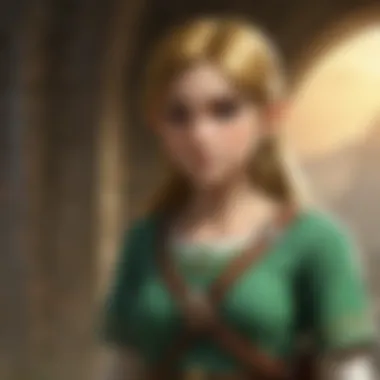
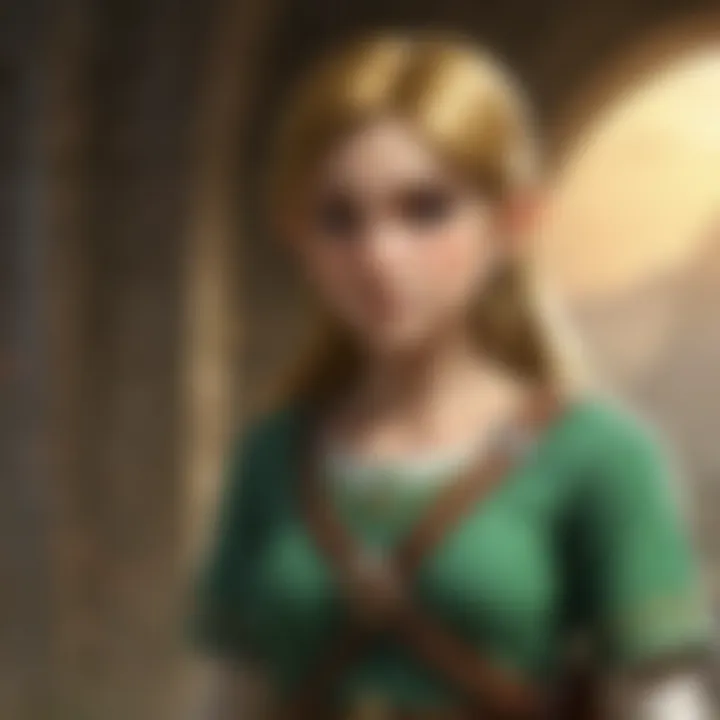
Community and Fan Engagement
The Zelda series has created a vibrant tapestry of community and fan engagement that significantly enhances its legacy. It’s not just the games; it’s the people who play them that breathe life into the world of Hyrule. Engaging with fans allows for a rich exchange of ideas, theories, and creative outputs that can influence even the direction of future titles.
Fan Theories and Speculations
Fan theories have become a sort of modern folklore within the Zelda community. Players often dive deep into the lore, piecing together timelines and hidden meanings hidden within the games. Theories range from simple musings about character motivations to complex timelines that incorporate every game released. For example, the prominent theory that Link’s journey in Ocarina of Time leads to the creation of separate timelines is a testament to the meticulous attention fans pay to the series.
- Key Benefits of Fan Theories:
- Engagement: They stimulate conversations and debates, igniting passion among fans.
- Understanding the Narrative: Delving into these theories enhances comprehension of the rich storytelling that has characterized the series.
- Fan-driven Content: They inspire fan art, fanfiction, and more, contributing to a collective narrative beyond the game itself.
In many online platforms like Reddit, fans share and discuss their theories. They create threads that can go on for pages, dissecting every piece of dialogue and hint within the game, akin to scholars in a classroom. This engagement not only keeps the community active but also fosters a sense of belonging among enthusiasts who share common interests.
"The Zelda community is like a second layer of the game itself; it deepens the experience and turns every player into a part of something bigger."
Community Creations and Modding
The creativity doesn’t just stop at theories. A plethora of community creations have emerged from the passion for the Zelda franchise. From fan art to entirely new game experiences, the fan base has shown incredible ingenuity through modding. Take The Legend of Zelda: Ocarina of Time, for instance. Numerous mods exist that add new gameplay mechanics or even complete graphic overhauls. This not only allows players to experience the game in new ways, but can also introduce fresh narratives or reimaginings of classic moments.
Notable Community Creations include:
- Zelda Classic: A fan-made project that brings players back to the original game's format while introducing new scenarios.
- The Legend of Zelda: Parallel Worlds: A fan-made complete remake of A Link to the Past with brand-new levels and challenges.
- Fan Art: From intricate illustrations to vibrant interpretations of characters, the art produced by the community captures the spirit of Zelda and inspires both fans and newcomers.
Moreover, platforms like Facebook and Reddit have become virtual galleries and forums where fans can showcase their creations, share tips, or even gain feedback. These spaces serve as gathering points to foster collaboration, spark creativity, and engage with other enthusiasts.
The robust community engagement surrounding Zelda has not only enriched the gameplay experience but has also contributed to its continuing legacy, weaving new narratives and interpretations that keep players entangled in their love for this timeless series.
Future of the Zelda Series
The Zelda series has long been a hallmark of gaming innovation and storytelling. As we look towards the future, it's essential to reflect on the elements that are shaping the direction of this beloved franchise. The gaming landscape continues to evolve rapidly. This evolution presents both challenges and opportunities for the series, making the discussion about its future particularly relevant. Understanding these aspects can enhance our appreciation for what is to come while also preserving the rich legacy that fans hold dear.
Emerging Trends and Technologies
In today's gaming world, emerging technologies are at the forefront of development. The Zelda series is poised to harness these technologies to elevate the gaming experience. The advent of virtual reality (VR) and augmented reality (AR) can mix with the already rich lore of Hyrule. Imagine stepping into Link’s world not just on a screen but in a fully immersive virtual environment. This kind of technology could create a level of engagement previously unseen in the series.
Furthermore, the implementation of online multiplayer experiences can introduce a new dimension to gameplay. Picture this: exploring Hyrule alongside friends, tackling dungeons, or solving puzzles in tandem. The social aspect of gaming is becoming increasingly vital, and Zelda could leverage this shift to revitalize its community and attract newcomers.
"The future belongs to those who prepare for it today." – Malcolm X
Another trend that stands to influence Zelda’s future is the use of AI-driven narratives. Advanced algorithms could provide personalized storylines based on player choices, making each adventure unique. This technology not only enriches replayability but also mirrors the complex narratives fans have come to love.
Potential Directions for New Titles
The potential directions for new Zelda titles seem limitless. As Nintendo continues to innovate, we can expect a diverse array of approaches that build on existing frameworks while introducing fresh concepts. One avenue could be a return to 2D gameplay, reminiscent of classic titles. Given the recent resurgence in retro gaming, a new Zelda game that captures this aesthetic could resonate deeply with both older fans and new players alike.
Conversely, the open-world format popularized by recent entries may continue to evolve. The series might expand its realm by introducing multiple time periods or parallel dimensions to explore within a single game. This concept aligns neatly with the Tolkien-esque lore already present in Zelda, inviting deeper exploration of character backstories and world histories.
The theme of environmental storytelling could also play a significant role in future titles, allowing players to piece together narratives through the world itself—be it through ruins, artifacts, or the fallen leaves of Hyrule's forests. This could enhance immersion as players discover secrets hidden in plain sight.
Finale
The concluding segment of this exploration into the Zelda franchise is a vital component, bringing together the various threads woven throughout the narrative. By reflecting on Zelda's legacy, we not only appreciate the remarkable journey the series has taken, but we also understand its multifaceted impact on gaming and culture. This segment is critical as it encapsulates the significant elements we’ve discussed, reinforcing the relevance of Zelda in today’s gaming landscape.
Reflecting on Zelda's Legacy
Examining Zelda's legacy is like looking through a time capsule, showcasing how much can change while still preserving the essence of what made it great in the first place. From its humble beginnings on the NES, where players first ventured into the vast lands of Hyrule, to the expansive, free-roaming styles of Breath of the Wild, the franchise has consistently evolved yet remained steadfast to its core principles.
One of the most significant aspects of Zelda's legacy is its profound effect on game design. It has influenced countless titles across various genres. Innovations like open-world exploration and intricate dungeon puzzles, which have become staples in other games, can be traced back to the creative genius behind Zelda. Players who navigate these environments are not just engaged in gameplay; they are partaking in experiences that blend adventure with rich storytelling.
Moreover, the characters, including Link, Zelda, and Ganon, have grown from pixelated sprites to fully fleshed-out icons of pop culture. Each iteration has added layers of depth, making the audience feel an emotional connection to their journeys, struggles, and triumphs.
Additionally, Zelda's music is a testament to its legacy. The iconic themes, composed by Koji Kondo, resonate strongly with fans, evoking nostalgia and excitement simultaneously. Music within the games has played a crucial role in enhancing the mood and immersing players in the landscape of Hyrule.
In essence, the legacy of Zelda is not just about the lineage of games or their innovative mechanics. It reflects a cultural phenomenon that resonates with players across generations, capturing imaginations and inspiring creativity. As we look towards the future of the franchise, the challenge will be to maintain this delicate balance between innovation and honoring the past.
This legacy is not just a collection of memories; it is a living, breathing entity that continues to inspire and shape the world of gaming today.
In closing, reflecting on Zelda's legacy invites both seasoned players and newcomers alike to ponder what makes this series a perennial favorite. Its influence reaches far beyond gameplay, setting a standard that many strive to meet, while simultaneously providing an enduring sense of wonder. As more titles release, fans eagerly await how this legacy will continue to unfold, branching into new stories and experiences while staying true to its roots.







